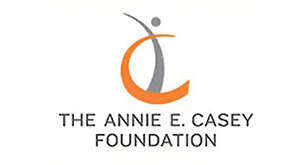Taking a Closer Look at Latino Children’s Well-Being
National Hispanic Heritage Month is an opportunity to honor the rich cultural diversity and histories of Hispanic and Latino populations in America. Each year, from Sept. 15 to Oct. 15, the month celebrates the valuable contributions these families and individuals make to our country. Given the Annie E. Casey Foundation’s focus on strengthening families and tracking the status of children through the KIDS COUNT® Data Center, this month is an excellent opportunity to take stock of Hispanic and Latino children’s health and well-being.
Who Are Hispanic and Latino Children?
Hispanic or Latino* children — representing over 1 in 4 kids nationwide — are not a homogeneous group. The U.S. Census Bureau categorizes more than 30 different Hispanic or Latino groups, including people originating from Mexico, Central or South America, Puerto Rico, Cuba and/or other Spanish-speaking countries. While these children represent a wide array of culturally diverse populations, most data sources categorize them as one group, which can mask important differences between populations. For instance, the Foundation’s 2024 Race for Results report found that among the 10 largest Latino or Hispanic groups in America, young people in families from Colombia, Spain and Cuba were more likely to meet benchmarks of financial stability, while families and young people from Honduras and Guatemala were the least likely to do so.
More than 90% of Hispanic or Latino children are U.S.-born citizens, although over half (51%) live in immigrant families, according to the Race for Results report. Children from Puerto Rico are U.S. citizens, of course, by virtue of their birth in a U.S. territory. More than 1.7 million Latino children in the United States are Puerto Rican.
Among children of color in America, Hispanic or Latino kids make up the largest racial or ethnic group, and they have grown — in number and share — more than any other group over the past two decades. Since 2000, the population of Hispanic or Latino children increased from approximately 12.5 million to 19.2 million in 2023.
Hispanic and Latino Children’s Health and Well-Being
The 2024 KIDS COUNT Data Book highlights areas in which Hispanic and Latino children and youth are faring better than national averages on health and safety measures. It also notes areas in which these children continue to experience disproportionately worse outcomes. Among the positive findings, infants who are Hispanic or Latino are more likely to be born at a healthy weight. This is critical because low birth weight is linked to long-term health problems and infant mortality. Kids and adolescents who are Hispanic or Latino also have lower death rates than the national average.
Despite these important successes, dozens of other indicators illustrate that our country is not providing Hispanic or Latino children and families with equitable opportunities and resources to achieve their full potential.

